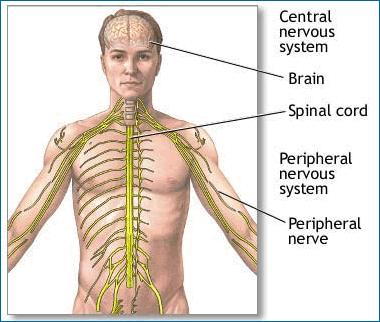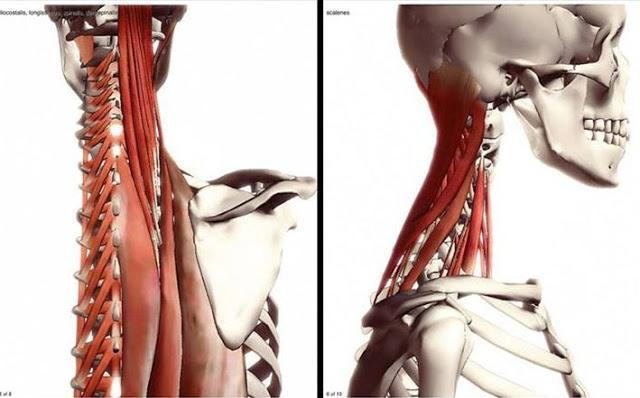Did you know your muscles have memory?
- posted: Jul. 15, 2014
If your body has suffered trauma, your muscles remember! The body is a fascinating thing. There are certain “safety switches” that exist in our muscles as a manner of protection from injury. Our Central Nervous System (CNS) communicates with our muscles through sensory organs called muscle spindles which are found in our muscles (Proske, Candevia, 2009). When a muscle is stretched, the CNS communicates to the spindle cells which stimulate a reflexive response to contract in order to protect the muscle from being injured (Hammer, 2012).
In the case of an accident or injury where trauma occurs to the  muscle, the spindle cells lower their threshold for stretch before they will respond with a contraction. For instance, if a driver is struck by another driver on the left side of their vehicle, it is likely that the driver being struck will experience a force which causes their head to move violently to the right. When the impact causes the head to move to the right, the muscles on the left side of the neck will be stretched well beyond the normal capacity that the spindle cells would allow. Then, the CNS will send a message to those cells to pull back at a rapid pace in order to protect the body from any further damage. When this occurs, a new “stretch” threshold has been created for the spindle cells and adhesions between the muscle and fascia (fibrous tissue that wraps muscles and organs) occur (Hammer, 2012).
muscle, the spindle cells lower their threshold for stretch before they will respond with a contraction. For instance, if a driver is struck by another driver on the left side of their vehicle, it is likely that the driver being struck will experience a force which causes their head to move violently to the right. When the impact causes the head to move to the right, the muscles on the left side of the neck will be stretched well beyond the normal capacity that the spindle cells would allow. Then, the CNS will send a message to those cells to pull back at a rapid pace in order to protect the body from any further damage. When this occurs, a new “stretch” threshold has been created for the spindle cells and adhesions between the muscle and fascia (fibrous tissue that wraps muscles and organs) occur (Hammer, 2012).
Following the accident, the driver generally attempts to go on with activities of daily living but may soon find that they are experiencing pain during activities where they never experienced pain before. Sometimes, even the act of holding ones head up can become a chore, let alone trying to go through the regular range of motion. At this point, the new threshold for the spindle cells has begun to take effect. Now, when the muscle that was over stretched begins to stretch throughout the course of daily activity, the CNS and muscle spindles are causing the muscle to contract. The adhesions between the muscle and the fascia are inhibiting normal communication between the spindle cells and the CNS. Generally, the muscles will end up in a continual state of tension or increased tonus. Being that muscles are what move our bones, this increased state of tension can make it difficult for an adjustment to take place and/or for the adjustment to hold.
In order to restore the normal communication patterns of the CNS and muscle spindles, the massage therapist can work to break up the  fascial adhesions. This process is like that of peeling the layers of an onion. Throughout each session, the therapist can work to break up the adhesions layer by layer. This process takes time, as it is important that the therapist work at a pace that the body is ready for. Remember, the spindle cells are now working at a lower threshold therefore, when the therapist stretches the muscles, they must do it slowly and carefully as to not push the new stretch threshold. During this time, the muscle spindles are being “retrained” regarding when to respond with a contractile response. With each session, the adhesions between the muscle and fascia can break apart.
fascial adhesions. This process is like that of peeling the layers of an onion. Throughout each session, the therapist can work to break up the adhesions layer by layer. This process takes time, as it is important that the therapist work at a pace that the body is ready for. Remember, the spindle cells are now working at a lower threshold therefore, when the therapist stretches the muscles, they must do it slowly and carefully as to not push the new stretch threshold. During this time, the muscle spindles are being “retrained” regarding when to respond with a contractile response. With each session, the adhesions between the muscle and fascia can break apart.
Once the adhesions are broken up, the therapist can work on any spasms that have occurred in the muscle in order to relax the state of tension it may be in (trigger point therapy). At this point, the therapist can begin active stretching with the patient in order to help increase range of motion without the muscle spindle and CNS causing the muscle to contract at the first sign of stretch. As this process happens, the muscles will begin to stay relaxed for longer periods of time following a massage and adjustment which will yield less pain. Additionally, the adjustments will begin to hold for a longer period of time. As the muscles return to their proper state of tonus, the patient can expect to see an increased range of motion, less muscle tension and therefore, less pain.
When you are working with the body’s natural healing capabilities, consistency is key. It takes time to restore the body’s healthy state of equilibrium and regular maintenance can help to keep both the proper muscle tonus and vertebral alignment for optimal health.
Sheldon Road Chiropractic & Massage Therapy
10930 Sheldon Road
Tampa, FL 33626
813.884.1457
www.sheldonroadchiropractic.com
Contact Us
Hours of Operation
Our Regular Schedule
9:00 am - 1:00 pm
2:00 pm - 6:00 pm
9:00 am - 1:00 pm
2:00 pm - 6:00 pm
9:00 am - 1:00 pm
2:00 pm - 6:00 pm
9:00 am - 1:00 pm
2:00 pm - 6:00 pm
9:00 am - 1:00 pm
2:00 pm - 6:00 pm
9:00 am - 1:00 pm
Closed

